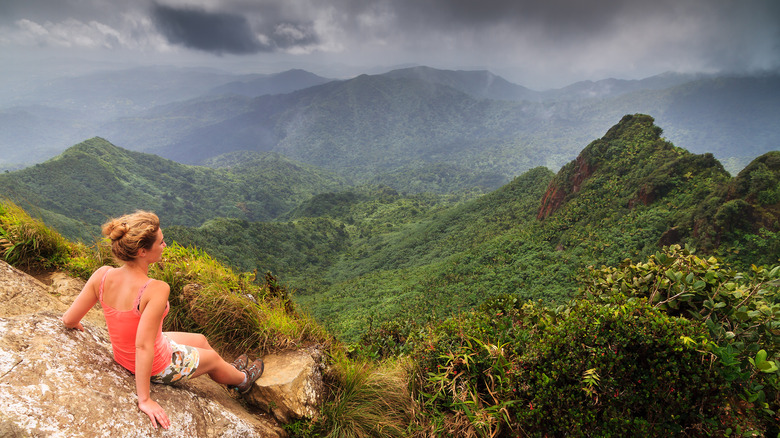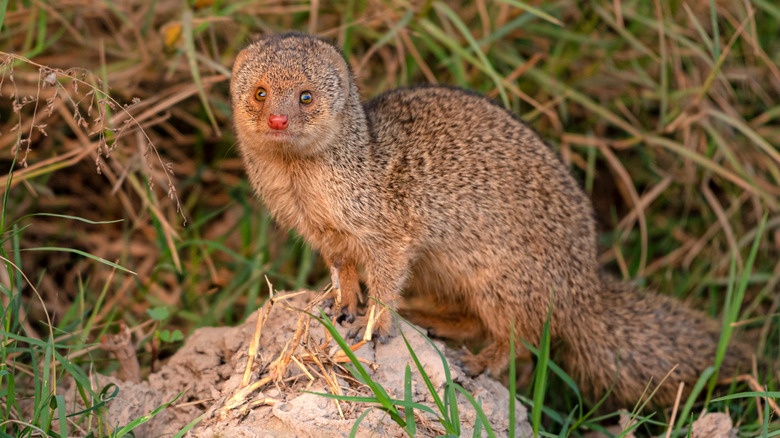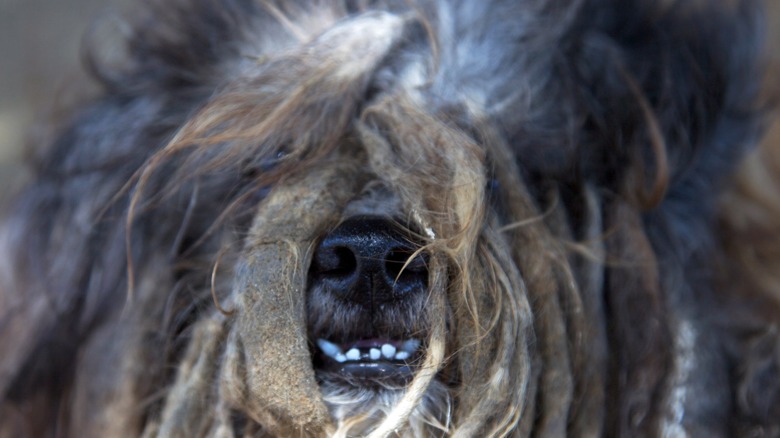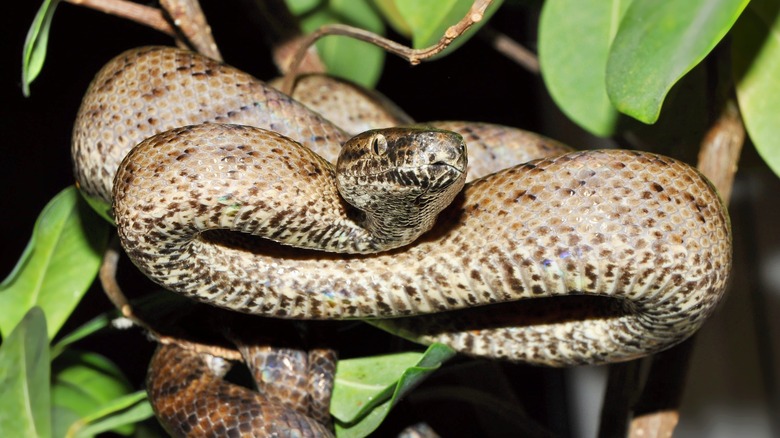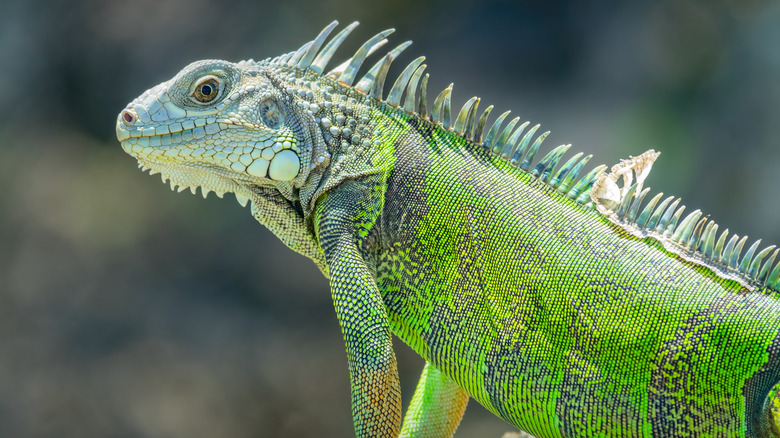5 Creatures To Beware Of While Adventuring In El Yunque National Forest
Puerto Rico is the easternmost island group in the Greater Antilles and a paradise for outdoor adventurers. However, because it is an island in the Caribbean, many people do not realize — or forget — that it is actually a U.S. territory. To that end, not only are U.S. laws in place, but the U.S. National Park Service as well as the U.S. Forest Service also have a presence on the island. Puerto Rico is home to El Yunque National Forest, which has the distinction of being the singular tropical rainforest under the management of the U.S. National Park System.
This lush rainforest, situated in the northeastern area of PR, offers visitors a wide variety of outdoor recreation opportunities. It is also home to an amazing array of flora and fauna, including the iconic coqui frog. However, there are also a few animals that pose a potential danger to visitors. With that in mind, these are five creatures you should beware of while adventuring in El Yunque National Forest.
Mongoose may be rabid
The small Indian mongoose is native to India and Pakistan but is considered one of the most widespread invasive species on the globe. However, unlike many invasive species, the small Indian mongoose was intentionally brought to many islands throughout the Caribbean and South Pacific during the mid-to late-1800s in order to try and control the population of rats and venomous snakes.
Today, they can be seen throughout the Puerto Rican archipelago, including the El Yunque National Rainforest. They may appear harmless and cute tempting park visitors to approach them, but it's a move the forestry service advises against, as mongoose can be both aggressive and possibly infected with rabies. If you encounter a mongoose, be sure to keep a safe distance. If you are attempting to get photos, use a zoom lens instead of moving in close for a shot. Finally, if you see a mongoose that is acting strange or aggressive, report it to park officials along with details on the area in which it was observed.
Feral dogs pose potential threat
Feral dogs are dogs that were once domesticated but now live in the wild, including those who have been born in the wild and are descendants of dogs that were once pets. Because they are typically breeds or a mix of breeds that are commonly seen as pets, it is sometimes hard to tell the difference between a feral dog and a pet that has gotten loose. According to the forestry service, one of the key differences is their behavior towards humans.
Additionally, since feral dogs resemble household pets, it is easy to dismiss them as a menace. However, if one imagines how some dogs that are household pets can potentially be dangerous, it's not a stretch to imagine how a pack of canines living in the wild could pose a threat. Additionally, feral dogs are often infected with various diseases and can be rabid. With that in mind, the forestry service advises visitors not to approach, pet, or feed any dog that they come across while adventuring in El Yunque. Since feral dogs are considered an introduced exotic species in the park and pose a potential danger to park visitors, it is important to report any feral dog sightings to forestry service personnel.
Snakes are cause for concern
It may seem a bit cliché, but one of the creatures you should beware of when adventuring through this tropical rainforest are actually snakes. There are a handful of snake species that call El Yunque home, although none of them are nearly as dangerous as serpents found in some of the other rainforests around the globe.
One species that is found in El Yunque is the largest snake in Puerto Rico, the Puerto Rican Boa Constrictor. While it is capable of growing beyond six feet in length, the Puerto Rican boa is not a venomous snake, nor is it considered among the more dangerous snakes in the world. Nonetheless, visitors should keep a distance and not handle boas if they happen across them as they can bite and, of course, constrict.
The second largest snake in Puerto Rico, the Puerto Rican racer, is also found in El Yunque. The racer is mildly venomous. While the racer's venom isn't strong enough to be considered lethal to humans, the snake is considered very aggressive and quite likely to bite if it feels threatened. So, park visitors are advised to avoid them if possible and give them plenty of space if they are encountered.
Green iguanas grow to imposing dimensions
The green iguana is one of a number of invasive species found in Puerto Rico. It is widely assumed that these reptiles got a foothold on the island after being released into the wild by persons who had them as pets. Regardless of how they came to be inhabitants of Puerto Rico, they have thrived in the tropical conditions and are found in high numbers all over the island, including in El Yunque. While the National Forestry Service lists six families of lizards in El Yunque, the green iguana is by far the largest, capable of growing to more than five feet long.
Green iguanas not only reach impressive proportions, they have a somewhat intimidating appearance. As a result, not many visitors choose to approach them. However, some do attempt to handle, chase, or catch them. This is almost always a bad idea, as iguanas are more than capable of biting, as well as transmitting salmonella just from contact. Even those who come too close may find themselves confronted by an aggressive iguana, so it is best to give them plenty of room when they are encountered.
Little fire ants can cause big pain
Regardless of where they are found, fire ants are considered one of the most dangerous ants you can encounter. This is no different in Puerto Rico, where the most menacing variety of ant is the little fire ant, also known as the electric ant. These invasive ants are found throughout El Yunque. They can be seen literally anywhere in the rainforest, but have a penchant for hiding in the leaves of trees and plants. With that in mind, it is important to watch where you step, where you place your hands, what you lean against, sit on, or brush against while venturing through the forest. At times, even the most aware rainforest trekker will find themselves on the receiving end of a bite or sting, as they also have a habit of dropping from limbs onto people beneath.
Despite their name, the little fire ant can administer some big pain. While their bites and stings are painful to everyone, they can be very dangerous — even life-threatening — to anyone with high sensitivity or allergies to their venom.
